Medical Treatment
Developmental disorders
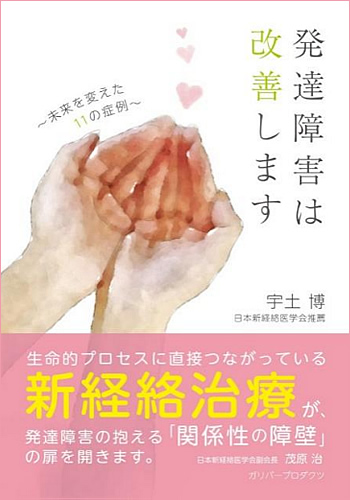
This is the first book to document the improvement of 11 cases of children with developmental disorders using the new meridian therapy.
Developmental disorder includes "autism, Asperger's syndrome and other pervasive developmental disorders, learning disorders, and attention deficit hyperactivity disorder. It is a functional disorder of the brain, the symptoms of which are usually manifested at a young age. (Developmental Disorders Support Act, enacted in 2005 in Japan)
The number of people with developmental disabilities aged 0-24 in Japan is estimated to be approximately 1.8 million, and is a major national challenge. The number has been increasing in recent years. Although research is still in progress to elucidate the causes of developmental disabilities, we believe that the main causes are brain damage at birth, head trauma in early childhood, and transmission of temperament.
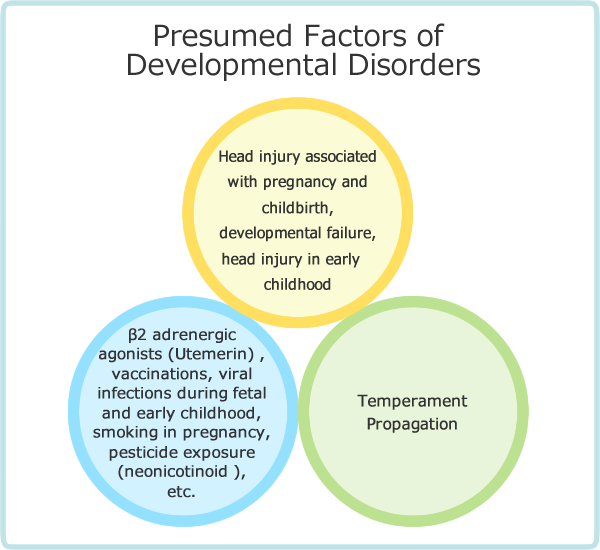
Dr. Robert Fulford, an American developmental disability specialist in the 1950s, pointed to perinatal and early childhood brain damage as a cause of developmental disabilities.
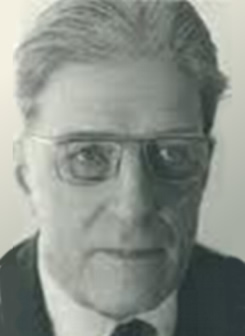
In his book, he states that (i) Head trauma during childbirth is on the rise and causes developmental disorder. (ii) Head trauma strong enough to cause breath-holding, due to falls and tumbles in early childhood, causes developmental disorders. Based on our clinical experience, we believe that birth defects are common, and head trauma and transmission of autism and ADHD tendencies of the parents are added to this.
Furthermore, it has recently been pointed out that the use of drugs (such as Utemerin) for more than 2 weeks to prevent imminent miscarriage and premature delivery is a factor in autism. In addition, pesticides that affect cranial nerves (e.g., nicotinoids) have been noted to be a factor in autism.
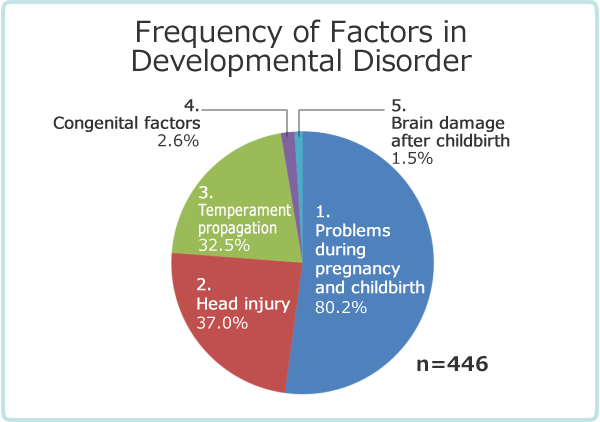
Figure 3-4 summarizes the factors that contributed to the onset of the 446 individuals who visited our clinic and were diagnosed with developmental disorder; because factors overlap in one person, the percentage exceeds 100%, but problems during pregnancy and childbirth are the most common, accounting for 80.2% of the cases. This is followed by head trauma in early childhood (37.0%), and in third place, temperament propagation from parents or other sources (32.5%). In contrast, congenital factors accounted for an extremely low 2.6%.
In this way, although genetic temperament is also relevant, most developmental disorders can be attributed to head trauma during developmental periods such as the perinatal period and infancy. Toru Ishibashi points out that "head injury causes higher brain dysfunction in adults, but causes developmental disorders in the developmental period."
Therefore, in order to prevent developmental disorders, it is important to give birth gently, prevent head injuries such as falls, prevent miscarriages and premature births centered on bed rest, and regulate pesticides.
This issue is a major challenge for school health from kindergarten through college and for occupational health after employment.
New Meridian Therapy for Developmental Disorders
Until now, developmental disorders have been considered to be centered on training and have no cure. However, research conducted by the Japanese Society of New Meridian Medicine has so far treated over 730 cases of developmental disorders with new meridian medicine. As a result, in treatment studies of learning disorders, autism spectrum disorders including Asperger's, AD/HD, and motor development disorders, improvement effects have been observed in 80-90% of these patients.
Behavior Therapy and Generalization
Uta Frith argued against behaviorist treatment, saying, "Deficits in social skills and communication were viewed as mis-learning that lead to correctness with new learning. However, behavior therapy - the actual application of behaviorist principles - has proven to be tremendously labor-intensive and often without worthwhile results. The expected generalization from one particular learning did not occur. In everyday life, there are always new situations in which previously learned behaviors are inappropriate, and new behaviors need to be expanded. Nevertheless, behavior therapy is still a useful method for addressing specific problem behaviors."
This indicates that behavior therapy is well suited for addressing specific problem behaviors, but that applied situations are difficult.
New Meridian Therapy activates the brain's circuitry so that generalization occurs, like knowing ten things when you hear one thing. This indicates that generalization occurs. This generalization is an excellent point of new meridian therapy. Therefore, we believe that the treatment of developmental disorders requires a combination of new meridian therapy and education/training
The mechanism of the ameliorative effect of the new meridian therapy is thought to be as follows.
(1) Brain neurons regenerate
For a long time, it was believed that damaged cranial nerve cells could not be repaired, and rehabilitation was performed to compensate for this by training in non-injured areas. However, recent studies have shown that they can be repaired, albeit at a slower rate than peripheral nerves.
(2) Acupuncture stimulation of the hands and feet increases brain neuron activation and blood flow
Using PET to examine blood flow in the brain, Yano reported that 15 minutes of energizing stimulation of acupuncture needles in hand region (acupoints: LI4/Goukoku) increased glucose metabolism, oxygen, and blood flow in the brain cortex. This suggests that hand acupuncture stimulation causes activation of brain cells.
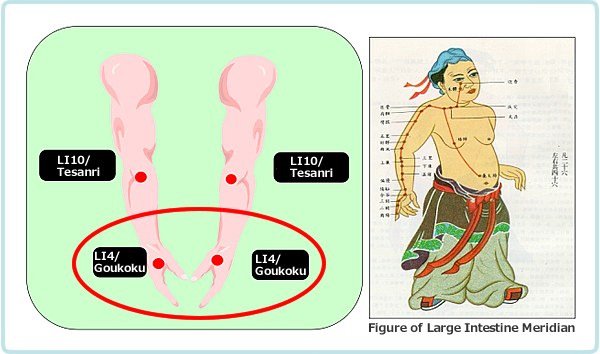
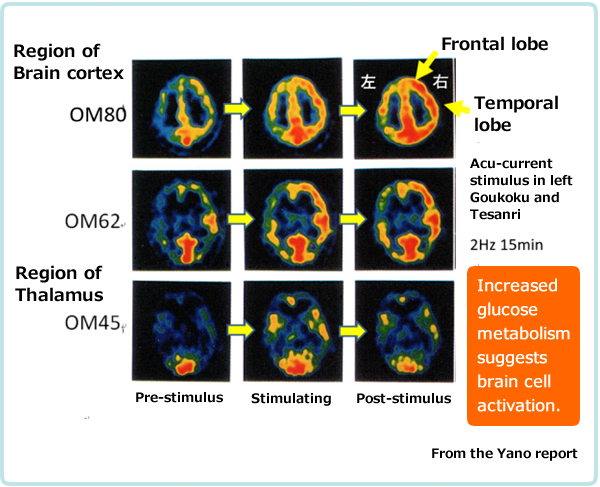
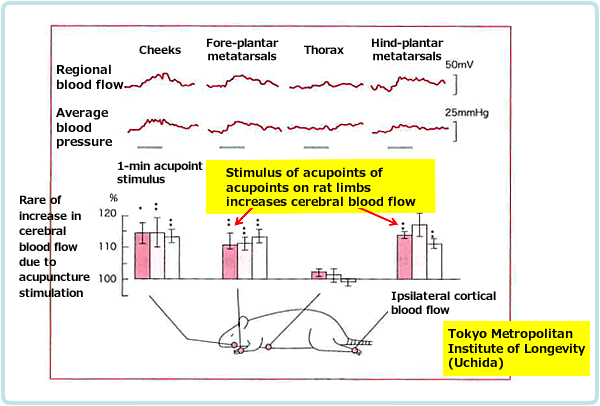
Figure 3-7 shows how stimulation of acupoints on the limbs of anesthetized rats increases cerebral blood flow, according to Uchida.
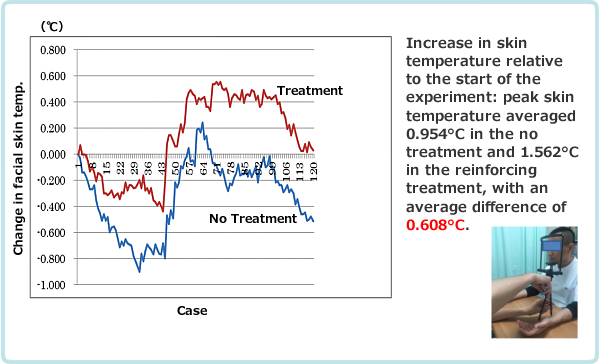
Figure 3-8 shows our study showing that acupoint stimulation of the left palm increases facial skin temperature compared to no treatment. This supports the study by Uchida et al.
| Treatment | N | Mean change in number of correct answers post-treatment vs pre- treatment |
SD |
|---|---|---|---|
| New meridian therapy ** | 27 | 10.3 | 5.8 |
| Placebo | 28 | 6.0 | 9.9 |
| No treatment | 29 | 1.9 | 9.8 |
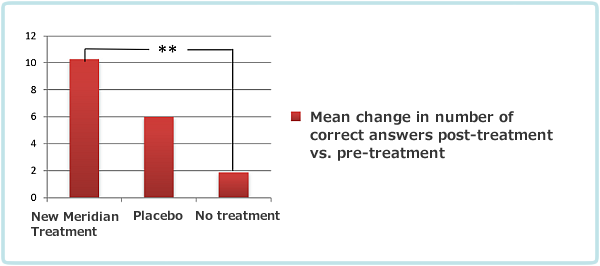
**p<0.0024, Significance of new meridian treatment compared to no treatment (t-test)
Figure 3-9 shows that the new meridian therapy significantly increases the speed of 100 squares calculation compared to no treatment. No significant difference is observed with placebo. It is thought that the stimulation of acupuncture points on the hands and feet with new meridian therapy activated the brain and increased calculation speed.
These studies show that stimulation of the hand and foot points causes activation of the brain and provide the basic evidence for the effects of acupoint stimulation on developmental disorders.
A Study of the Collective Effectiveness of New Meridian Therapy for High-Functioning Autism
Abstract: The 30 subjects with high-functioning autism were analyzed between June 2010 and March 2014 of which 17 received the new meridian therapy at least 6 times and for whom we have complete data. Treatment focused on the upper central bladder system and the kidney meridian, with a 10-minute treatment per session of connecting, reinforcing, and overcoming. The evaluation scale consisted of 30 items for developmental, emotional, motor, listening, reading, writing, and other disorders, and was rated on a 4-point scale, with 3, 2, 1, and 0 points assigned to evaluate treatment efficacy. The results showed that 11 patients (64.7%) improved a great deal, 5 (29.4%) improved moderately, 1 (5.9%) improved a little, and 0 (0.0%) showed no change. The percentage of those who improved moderately or more was 94.1%. High-functioning autism, based on weakness of integrated circuits such as the social brain due to temperament propagation.
It is believed that autism is caused by a blockage of the brain pathways due to perinatal abnormalities and other factors. New meridian therapy is thought to improve high-functioning autism by improving the blocked brain pathways and repairing and adjusting the cranial nerve connection circuits.
| Total No. | 17 | |
| Gender | Male 16 (94.1%) | Female 1 (5.9%) |
| Age | 9.0±5.5 years (2-22 years) | |
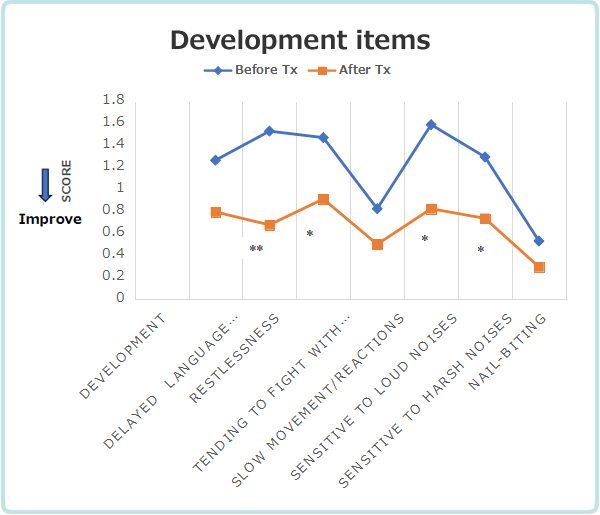
**, * p<0.01,0.05 Significant difference compared to pre-treatment. (Paired Wilcoxon test)
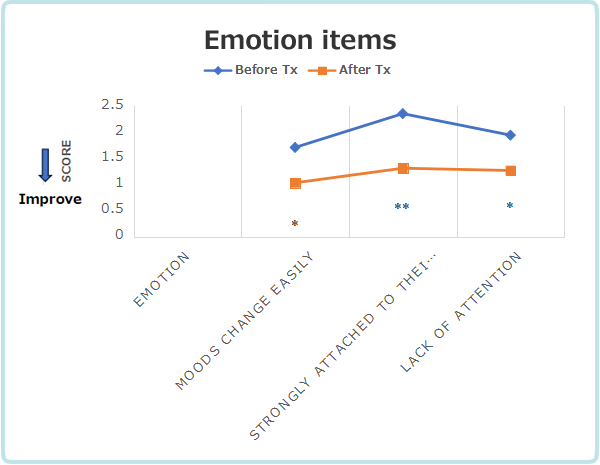
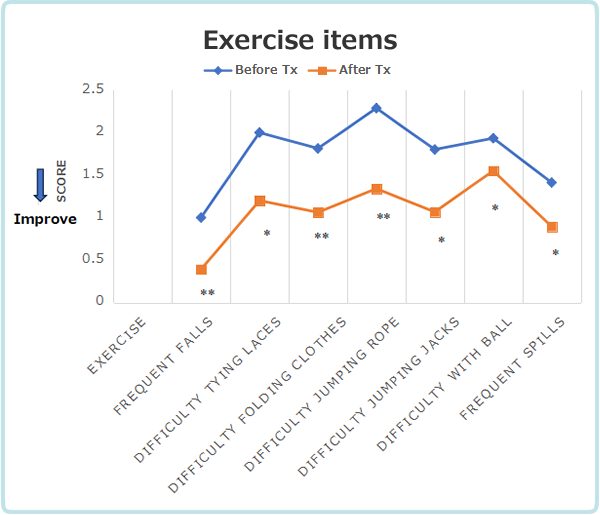
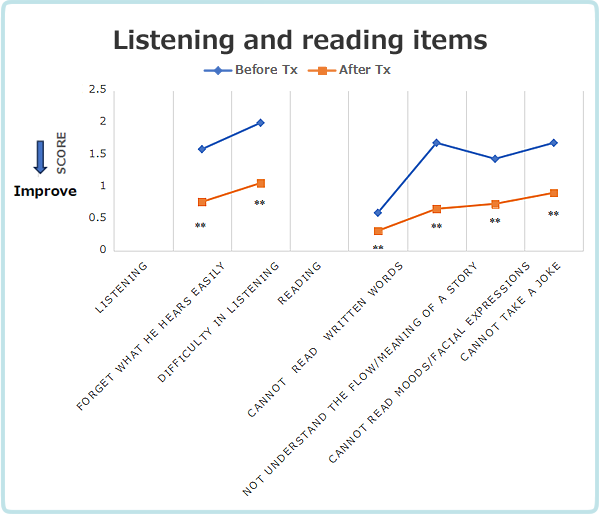
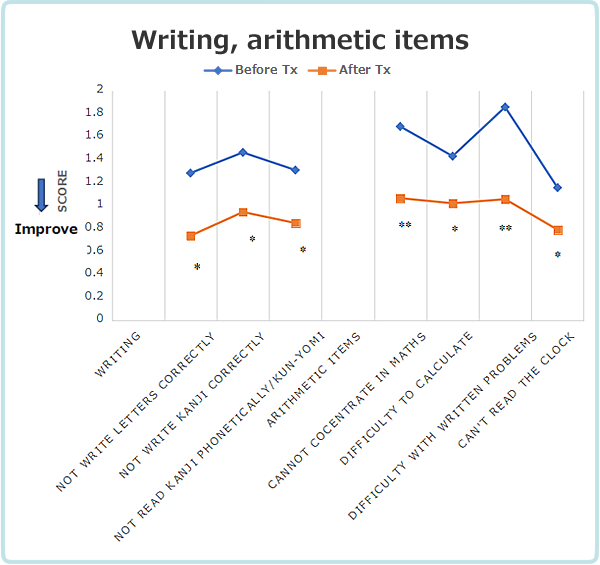
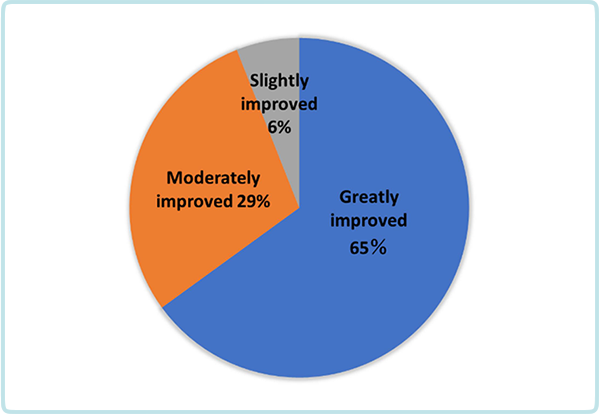
Treatment Case 1
7-year-old girl
Name of disease: High-functioning autism
- Birth progress
- the patient was given a labour-inducing drug for weak labour, but went into overstrength labour. Due to dystocia, a combination of fetal extrication by Kristeller's method with a nurse riding on the abdomen and suction delivery with a suction cup was used. The baby was delivered 44 hours after the start of labour.
- Propagation of temperament
- paternal grandmother is incapable of computation and does not handle situations well. Maternal aunt has AD/HD and has trouble with math.
- Developmental process
- Started walking late at around 2 years of age, first words at 3-4 years of age, slow language development, plays alone, said unintelligible things until around 5 years of age, still unable to play with friends at 4 years of age. Therefore, at the age of 4, she visited a rehabilitation centre and was diagnosed with high-functioning autism; at the age of 6, her WISCIII intelligence test showed a slightly low IQ with a total test score of 82, language 82, perceptual reasoning 85, memory 79 and processing speed 96.
She is currently in grade 2 and attends a regular school. She has a picky eater and only eats white-coloured foods such as rice, potatoes and bread. Since the first grade, she does not use any of her personal items, such as clothes, shoes and cups, unless they are yellow. Cannot ride a bicycle. Panics when plans go awry.
Has strong auditory sensitivity when nervous. In calculations, has difficulty understanding carry-over calculations. Has difficulty understanding clocks. Nervous in new situations. - Progress of New Meridian Therapy
- New meridian treatment involves connecting, reinforcing and overcoming treatment of the bladder and kidney meridians.
- Just after the first Tx
- Her writing pressure became stronger and her handwriting became more beautiful. Origami also matched the corners, which surprised her mother.
- Previously
- She had not eaten the new menu because it made her feel sick. However, after first Tx, when her mother served her a new menu - Chinese vinegared food - she ate it for the first time and finished it. This surprised her mother. She said, "I finally understand how to fold origami" and was able to fold it beautifully.
- 5 Tx
- She began to understand a real clock. He started to speak meaningful words. After the new meridian treatment, her mother was surprised to see that his handwriting in his contact book became beautiful.
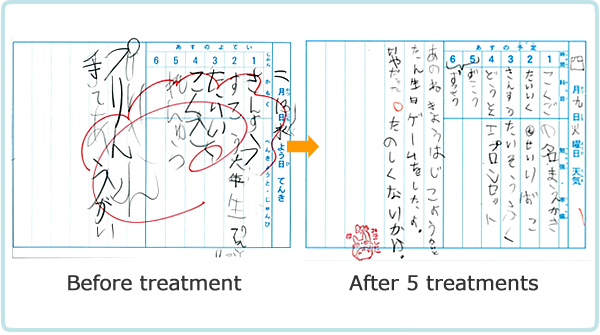
Figure 3-16. The treatment makes the handwriting in the contact book cleaner. - After 31 Tx
-
Mother's evaluation
●She’s now quicker at doing calculations.
●is now able to draw pictures and color within the frame.
●understands stories better and does not lose her temper anymore.
●is able to tell me what she was told at school.
●is now able to connect with others in conversation.
●is now able to study calmly at school.
●is now understands the days of the week.
●can eat more kinds of foods than before.
●can put foods in her mouth that are new to her.
●can do her homework every day. - After 63 Tx
- At the school teacher's home visit, she is told for the first time that there is no problem in school.
She plays well with his friends. She is no longer obsessive about sound.
Dec. next year (from first visit - 2 years and 8 months) She is still doing well in school.
- Summary
- A case of probable high-functioning autism caused by problems at birth and propagation of temperament. The case recovered well with new meridian treatment.
Treatment case 2.
10-year-old boy, 4th grade
Disease name: High-functioning autism, AD/HD, epilepsy
- Gestation and delivery
- The child's head is too large to come out. Suction delivery is used because the birth canal is narrow.
- Temperament Propagation
- Paternal grandfather is hyperactive, and says he will die if he stays still. He says what he wants to say. His father is inattentive, hyperactive and always jiggle his legs. As a child, his father always stands and walks in the classroom.
- Developmental Progress
- At age 1, he fell down concrete stairs.
At age 2.5, he fell off a playground equipment and broke two front teeth.
In the third grade of primary school, he was diagnosed with inattention-dominant AD/HD at a rehabilitation center due to his slow copying of the board into his notebook and his hand-eye co-ordination disorder.
He is able to calculate but has trouble thinking in order. Also has difficulty with angle problems and sentence problems.
He cannot keep up with his maths studies and has difficulty with Kanji memory.
He takes sleeping pills internally for insomnia. He wakes up at 4~5am. - Progress of New Meridian Therapy
-

Figure 3-17. Pre-treatment finger-to-finger test: Left and right fingers are out of alignment. 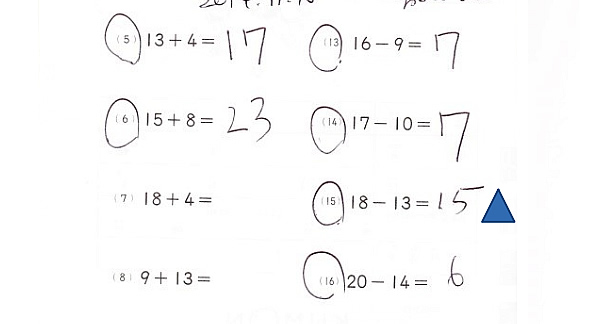
Figure 3-18. After one treatment, he does the calculations he is not good at by rote, without using his fingers. The mother is surprised. 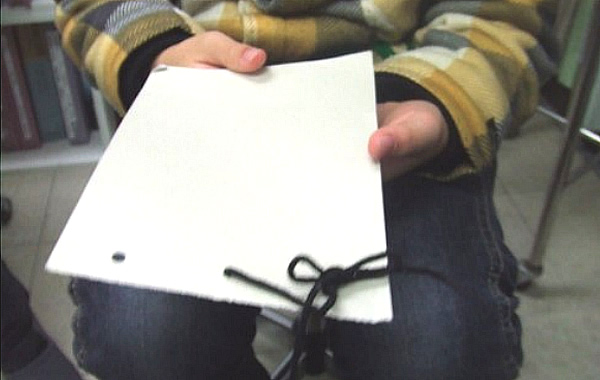
Figure 3-19. After two treatments, he's able to tie a bowknot. The mother is surprised. - After 12 Tx
-
Evaluation by mother
●He sleeps better and no longer wakes up in the middle of the night.
●neatly aligns his shoes together after taking them off.
●notices details at school. (He writes his own report card).
●is brighter and more energetic. He talks a lot.
●writes Kanji characters well and learns them quickly.
●writes carefully.
Table 3-4. Developmental Testing Trends (rating points) Attentional item First visit 1 month later 4 months later 5 months later Lack of attention to what has to be done 3 1 1 1 Exercise items (total rating points) 19 12 7 5 Frequent falls 1 1 1 0 difficulty tying laces 3 1 1 1 difficulty folding clothes 3 0 0 0 difficulty jumping rope 3 3 1 1 difficulty jumping jacks 3 3 1 1 difficulty with ball games 3 3 2 1 frequent spills 3 1 1 1 Scoring system: 3: Very applicable. 2: Fairly applicable. 1: Slightly applicable.
- Summary
- Table 3-4 shows the developmental tests. Attention and motor skills were markedly improved by the new meridian therapy. New meridian therapy can also markedly improve motor developmental disorders.
Treatment Case 3.
8-year-old boy: high-functioning autism, AD/HD, secondary disorder Second grade, attends regular class and emotional class.
- Developmental Progress
-
It is suggested that his temperament is propagated from his father.
Diagnosed with AD/HD and autism spectrum disorder at a rehabilitation center.
At school, he is noticeably absent from his seat, talks to his friends in class, and has difficulty in class. He is therefore placed in a support class, but he does not want to go to the support class every day. When he clashes with his friends, he becomes emotionally uncontrollable and violent. He injures one of his friends every week. Unable to control his emotions, he hits things and cries and screams.
He loses his temper at school twice a day. It takes 15 minutes to an hour for the tantrum to subside. - Progress of New Meridian Therapy
-
- After 25 Tx
- he did not get to a fight for a month. He is able to control his emotions.
- 45 Tx,
- in the third grade, he never leaves his seat during class.
- 69 Tx
- his friends came to visit him during summer vacation. Progress is good.
- 6th grade, after 3 months of study, he passed the entrance exam to a highly rated junior high school.
Currently in his third year of junior high school, he is also active in soccer.
- Summary
- New meridian therapy has been shown to be effective for secondary disorders of developmental disorders.